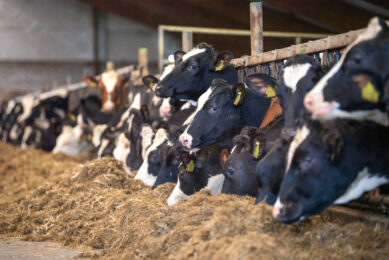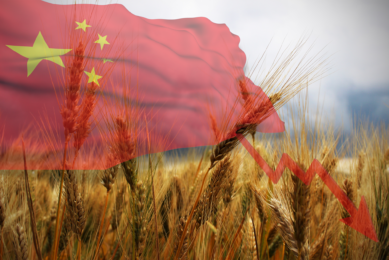Global milk supply expected to grow modestly

Global milk supply is expected to grow modestly this year, according to Kelly Eckhold, Westpac NZ chief economist, with New Zealand production likely to be slightly up on last year.
“In contrast, environmental regulations have driven a substantial drop in European milk production recently,” Eckhold says.
Dairy auction prices posted modest gains overnight on the Global Dairy Trade Auction on 21 February. Overall prices were up 0.5%, while key whole milk powder (WMP) prices fell 1.8%. The result was a bit more mixed than recent auctions. Cheese prices continued recent volatility, falling 7.6% after a large 6.3% rise last time.
This outcome was broadly in line with expectations, Eckhold says. “We had forecast a 1% fall in whole milk powder prices, which was in line with the futures market. We noticed that Chinese buyers picked up around half of total products sold, even though the Chinese New Year holiday period ended days ago.”
China dairy demand
The Westpac economist points out that Chinese demand is creeping up and is now around the 10-year average. Overall prices continue to sit near their highest since June 2023. “On a longer horizon, prices are modestly above long-term averages,” he says, adding, “Increases in on-farm costs, though, mean that these are hardly great times for dairy farmers.”
According to a recent Rabobank report, between 2012 and 2022, Chinese cheese demand grew almost 200,000 metric tonnes. The report anticipates further growth at a 9.1% compound annual growth rate from 2023 to 2030, with total cheese demand reaching 495,000 metric tonnes in 2030.
Rabobank emphasises that domestic supply cannot satisfy increasing local cheese consumption in China, and global cheese traders will have plenty of opportunities in the coming years to capture rising demand.
Michelle Huang, dairy analyst for Rabobank, says that low per capita consumption, expansion of quick-service restaurants, bakeries, and tea shops, as well as product innovation, provide a platform for a gradual increase in Chinese cheese demand. China will remain a growth engine for the global cheese trade, she expects.
Domestic cheese production is likely to account for 35-45% of total cheese consumption in China, leaving a 55-65% share from imports. “We estimate China’s annual cheese imports will reach 270,000 to 320,000 metric tonnes in 2030,” Huang says.
In Rabobank’s Australian Dairy Sector Outlook, the agribusiness bank says the overall trade profile for Australian dairy is in a period of transition, driven by a confluence of factors, including lower domestic milk production, an erosion of export competitiveness and more favourable domestic market returns
Dairy imports Australia
The bank expects dairy imports to play a more significant role in Australia’s domestic supply chain into the future with local milk production remaining constrained and as the industry further adjusts to accommodate these shortages.
Dairy giant Fonterra has increased its 2023-2024 season forecast farmgate milk price, with the midpoint lifting by 30 NZ cents (19 US cents) to NZ$7.80 (US$4.81) per kg milk solids, up from NZ$7.50 (US$4.63) per kg. The forecast range for the season increases to NZ$7.30 (US$4.50) to NZ$8.30 (US$5.12) per kg.
Fonterra CEO Miles Hurrell says the lift in the farmgate milk price comes off the back of 5 strong Global Dairy Trade events. “Recently, we’ve seen a lift in demand, primarily from the Middle East and South East Asia for our reference commodity products, and this has been reflected in GDT prices. Overall GDT prices are up 10% since our last milk price update in December, with whole milk powder prices up 11.5% over the same period.”
The US Dairy Export Council says that China remains the first major variable likely to influence the direction of US dairy exports and global markets. However, China’s future growth trajectory remains murky, it says.
The council expects that weaker economic performance is likely to weigh on China’s dairy consumption growth again next year, particularly at foodservice. Ultimately, with demand growth questionable, the abundance or scarcity of local milk supplies will play a major role in determining dairy import needs. “As we’ve seen the past several years, the Chinese industry has made significant investments in boosting their local milk production,” the council says.
Join 13,000+ subscribers
Subscribe to our newsletter to stay updated about all the need-to-know content in the dairy sector, two times a week.










